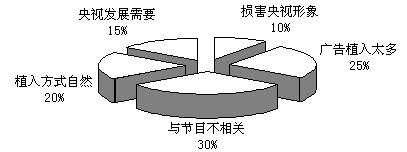1 . In 1953, when visiting his daughter’s maths class, the Harvard psychologist B.F. Skinner found every pupil learning the same topic in the same way at the same speed. Later, he built his first “teaching machine”, which let children tackle questions at their own pace. Since then, education technology (edtech) has repeated the cycle of hype and flop (炒作和失败), even as computers have reshaped almost every other part of life.
Softwares to “personalize” learning can help hundreds of millions of children stuck in miserable classes—but only if edtech supporters can resist the temptation to revive harmful ideas about how children learn. Alternatives have so far failed to teach so many children as efficiently as the conventional model of schooling, where classrooms, hierarchical year-groups, standardized curriculums and fixed timetables are still the typical pattern for most of the world’s nearly 1.5 billion schoolchildren. Under this pattern, too many do not reach their potential. That condition remained almost unchanged over the past 15 years, though billions have been spent on IT in schools during that period.
What really matters then? The answer is how edtech is used. One way it can help is through tailor-made instruction. Reformers think edtech can put individual attention within reach of all pupils. The other way edtech can aid learning is by making schools more productive. In California schools, instead of textbooks, pupils have “playlists”, which they use to access online lessons and take tests. The software assesses children’s progress, lightening teachers’ marking load and allowing them to focus on other tasks. A study suggested that children in early adopters of this model score better in tests than their peers at other schools.
Such innovation is welcome. But making the best of edtech means getting several things right. First, “personalized learning” must follow the evidence on how children learn. It must not be an excuse to revive pseudoscientific ideas such as “learning styles”: the theory that each child has a particular way of taking in information. This theory gave rise to government-sponsored schemes like Brain Gym, which claimed that some pupils should stretch or bend while doing sums. A less consequential falsehood is that technology means children do not need to learn facts or learn from a teacher—instead they can just use Google. Some educationalists go further, arguing that facts get in the way of skills such as creativity. Actually, the opposite is true. According to studies, most effective ways of boosting learning nearly all relied on the craft of a teacher.
Second, edtech must narrow, rather than widen, inequalities in education. Here there are grounds for optimism. Some of the pioneering schools are private ones in Silicon Valley. But many more are run by charter-school groups teaching mostly poor pupils, where laggards (成绩落后者) make the most progress relative to their peers in normal classes. A similar pattern can be observed outside America.
Third, the potential for edtech will be realized only if teachers embrace it. They are right to ask for evidence that products work. But skepticism should not turn into irrational opposition. Given what edtech promises today, closed-mindedness has no place in the classroom.
1. According to the passage, education technology can ________.| A.decrease teachers’ working load |
| B.facilitate personalized learning |
| C.help standardize curriculums |
| D.be loved by schoolchildren |
| A.The students who are better at memorization tend to be less creative. |
| B.Schools with bans on phones have better results than high-tech ones. |
| C.Shakespeare was trained in grammar but he penned many great plays. |
| D.Lu Xun’s creativity was unlocked after he gave up studying medicine. |
| A.at the service of teaching |
| B.limited in use among pupils |
| C.aimed at narrowing the wealth gap |
| D.in line with students’ learning styles |
| A.To stress the importance of edtech. |
| B.To introduce the application of edtech. |
| C.To discuss how to get the best out of edtech. |
| D.To appeal for more open-mindedness to edtech. |
| A./;that | B.that; which |
| C.that; what | D./; which |
1. 我们再怎么强调保护眼睛的重要性也不为过。
2. 无可否认,我们的生活品质已经变得越来越糟。
3. 全世界都知道树木在环境保护中起着非常重要的作用。
4. 时间是如此珍贵,我们不能浪费它。
5. 虽然我们的国家很富有,但是我们的生活质量却令人很不满意。
--It was on the very farm ___ we once worked.
| A.that | B.which |
| C.what | D.where |
| A.devoted to doing | B.devoted to do |
| C.devoting to do | D.is devoted to doing |
| A.what; that | B.that; what |
| C.that; that | D./ ; that |

注意:
1、对所给提示,不要简单翻译,可适当增加细节,使行文连贯
2、词数150左右,开头已给出,不计入总词数。
3、植入广告:product placement
The 2010 Spring Festival Gala has set records for TV commercial rates, which accordingly has caused heated discussions due to product placement in the programmes.
____________________________________________________________________________________________
____________________________________________________________________________________________
____________________________________________________________________________________________
____________________________________________________________________________________________
____________________________________________________________________________________________
____________________________________________________________________________________________
____________________________________________________________________________________________
____________________________________________________________________________________________
_________________________________________________________________



